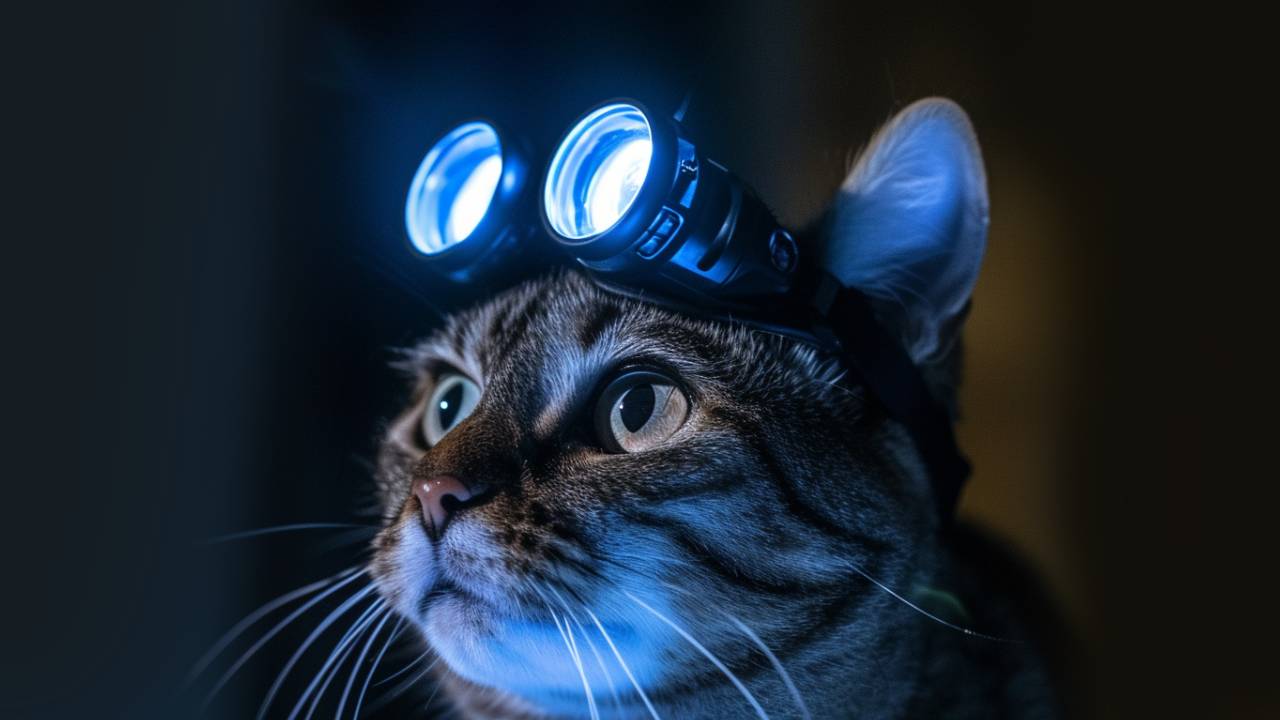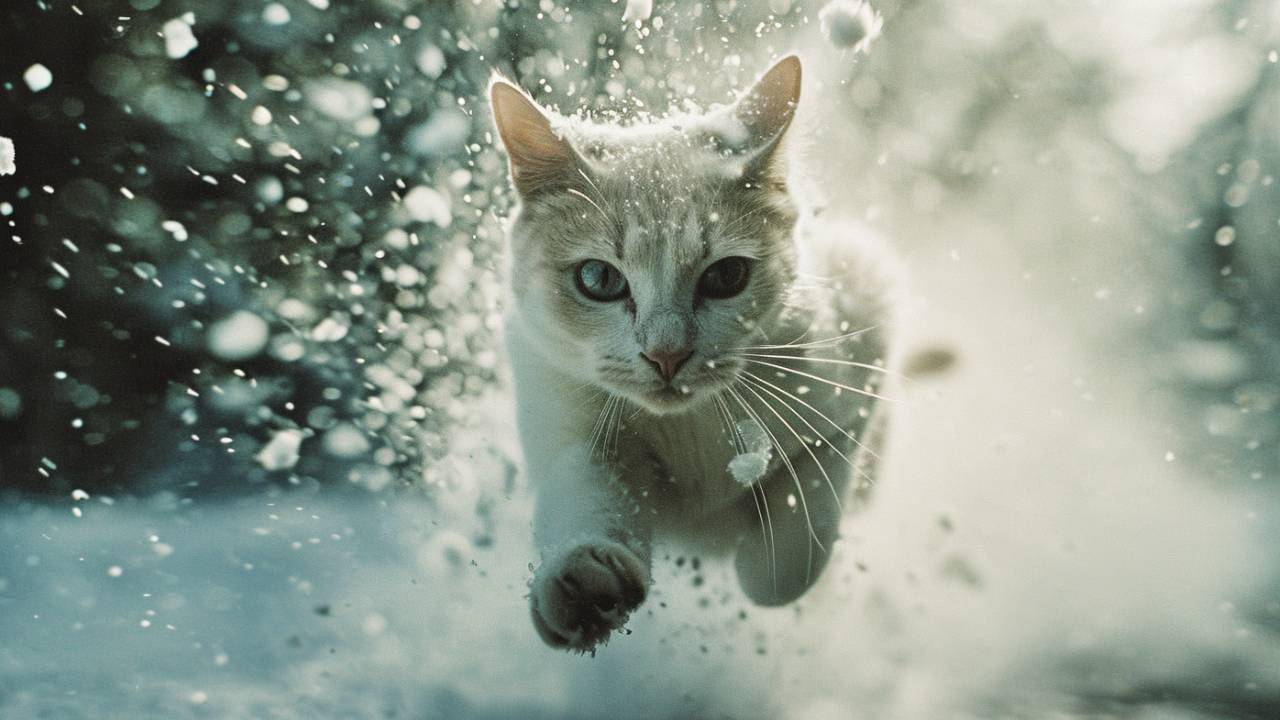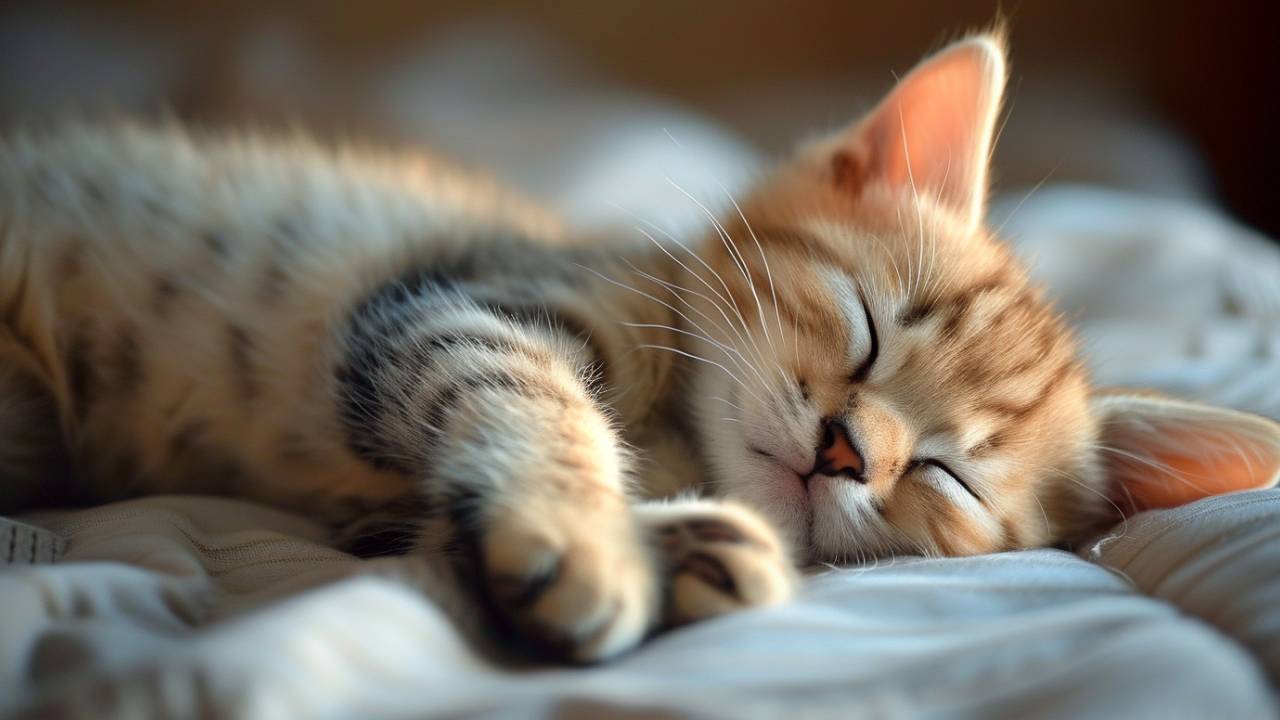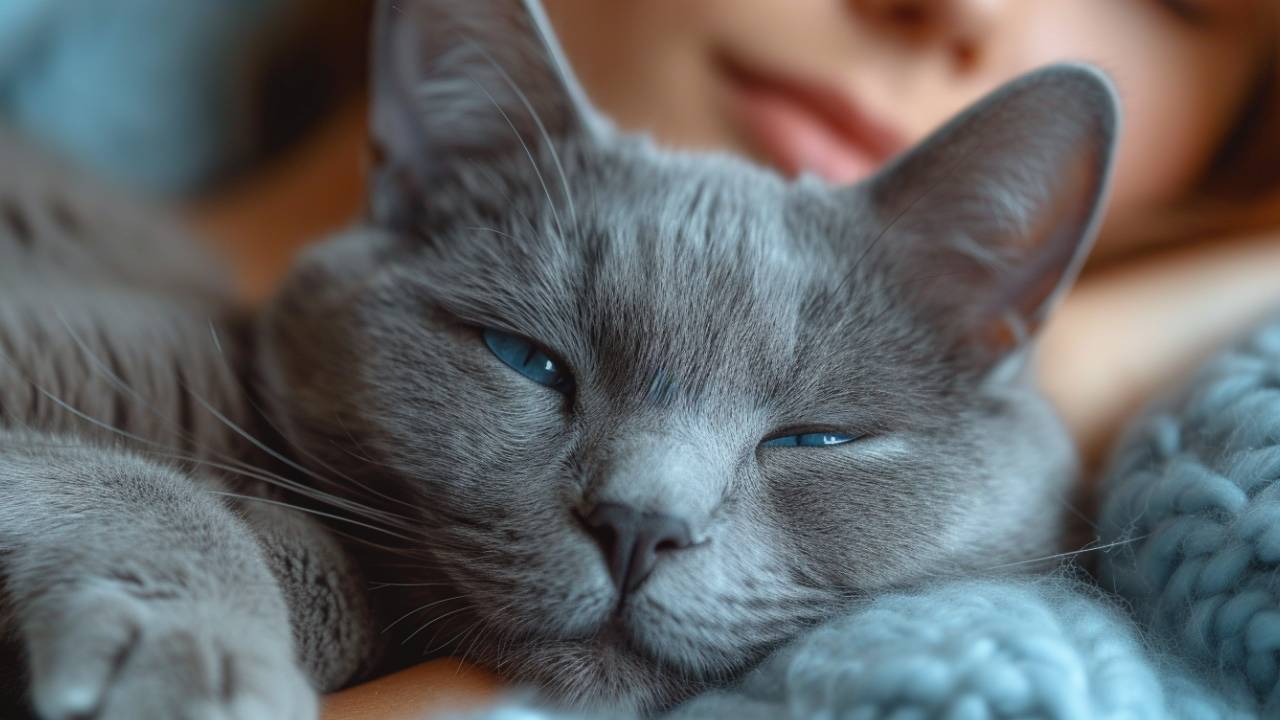Cats are silly, sneaky, smart, and totally awesome! If you love animals, you’re going to have fun learning these 50 cat facts for kids. From how high they can jump to why they purr, this list is packed with fun facts about cats that will surprise you. If you’re a future cat owner or love learning cool things, these are the perfect facts kids should know about cats. 🐾
So grab your curiosity (and maybe your own kitty), and get ready to discover some amazing things about your favorite furry friends 😺✨
1. Cats Can See in Low Light 🌙👀

Cats have special eyes that help them see in the dark far better than humans. Their pupils expand super wide to let in more light, and a shiny layer behind their retina reflects it. This makes them excellent nighttime explorers and gives their eyes that spooky glow in photos!
2. Their Ears Can Move Independently👂
Each cat ear can rotate up to 180 degrees, and they move separately like little radars! This helps cats locate even the tiniest sound, whether it’s a toy under the couch or a bird outside the window. Their super-powered hearing makes them great hunters—even indoors.
3. Cats Use Their Tails for Balance 🐈
A cat’s tail acts like a counterbalance when walking on fences or squeezing through tight spaces. It helps them adjust their body position so they don’t fall. That’s why you’ll often see your cat’s tail straight out or swaying gently as they move with perfect grace.
4. Cats Can Run Up to 30 Miles Per Hour 🐾

Cats may look lazy when napping all day, but don’t let that fool you; they can run extremely fast when they want to. In short bursts, some cats can reach up to 30 mph, which helps them chase after toys or zoom around the house during playtime (aka “the zoomies”).
5. Whiskers Help Cats “See” Without Their Eyes 🐱
Whiskers are super-sensitive tools that detect air movement, touch, and space. They help cats know whether they can fit into a tight spot or if something is nearby, even if they can’t see it. Never trim a cat’s whiskers; they’re essential to how they explores the world!
6. Cats Can Jump Six Times Their Body Length 🦘😲
Thanks to powerful muscles in their back legs, cats are expert jumpers. They can leap over fences, up onto tall counters, and even into your arms from across the room. For a cat, jumping isn’t just fun; it’s natural and super useful!
7. Cats Communicate Without Words 💬🐾
Cats don’t need to meow to speak. Their tails, ears, eyes, and body positions all send signals. A curved tail means they’re happy, flattened ears show fear, and a slow blink is like a kitty kiss. The more you learn their language, the closer your bond will grow.
8. Purring Might Help Them Heal 💓😺
Most people think cats purr when they’re happy—and that’s true. But scientists also believe purring can help cats heal! The vibrations may ease pain, improve bone strength, and even reduce stress for both the cat and anyone petting them.
9. Cats Have a Super Sense of Smell 👃😼
A cat’s nose has around 200 million scent receptors (humans only have 5 million!). They use their noses to identify food, people, other animals, and even places. That’s why a cat can tell when you’ve been near another animal—even if it was hours ago!
10. All Kittens Are Born With Blue Eyes 👁️👶
When kittens are born, their eyes are always blue. As they grow, their eye color may change to green or gold or stay blue, depending on their genes. The final color usually settles by the time they’re 7 to 12 weeks old.
11. Cats Have a Favorite Paw 🐾✋
Just like humans are right- or left-handed, cats often prefer one paw over the other. Scientists have studied this and found that some cats are “left-pawed,” others are “right-pawed,” and some switch it up, especially when reaching for treats or toys!
12. They Can Hear Sounds Humans Can’t 🔊🐭
Cats hear at a much higher frequency than people. They can detect tiny sounds made by insects or squeaking mice, which is one reason they stare at things you can’t see or hear. Their ears are always on alert—even when they look asleep.
13. Cats Can’t Taste Sweetness 🍭🚫
Unlike humans, cats don’t have taste receptors for sweet flavors. They don’t care about candy or cookies because they literally can’t taste them! Their taste buds are more tuned to meat, making protein their favorite treat.
14. Cats Sleep Up to 16 Hours a Day 😴🛏️

Cats are professional nappers. Most adult cats sleep between 12 and 16 hours a day, and kittens sleep even more. This helps them save energy for exploring, hunting (or playing), and racing through the house at 3 a.m.!
15. They Only Sweat Through Their Paws 🐾💦
When cats get hot or nervous, they don’t sweat all over like humans do. Instead, they sweat through the pads on their paws. That’s why you might see tiny wet paw prints at the vet or on a hot day.
16. Each Cat Nose Is Unique 👃🆔
A cat’s nose print is like a fingerprint—it has a one-of-a-kind pattern made of tiny bumps and ridges. No two cats have the same nose, making every kitty extra special.
17. Cats Have a Third Eyelid 👁️🗨️
It’s called the nictitating membrane, and it helps protect their eyes from dust, scratches, and dryness. You might spot it when your cat’s very sleepy or feeling unwell—it looks like a tiny whitish film in the corner of their eye.
18. Their Tongues Have Tiny Hooks 👅🪥
A cat’s tongue feels like sandpaper because it’s covered in tiny backward-facing hooks called papillae. These help them groom their fur, lick meat off bones, and clean up after meals. It’s nature’s built-in kitty brush!
19. Cats Can Twist Their Bodies Mid-Air 🤸🐱
When falling, cats use their flexible spines and quick reflexes to twist around and land on their feet. This is called the “righting reflex,” and they develop it by the time they’re a few weeks old.
20. They Have 230 Bones 🦴
That’s more bones than humans! Many of these are in their spine and tail, which makes them extra flexible. That’s how they can curl into tiny boxes or stretch into long noodle shapes!
21. Cats Have a Special “Smell-Tasting” Organ 👃👅
It’s called Jacobson’s organ (or vomeronasal organ), located on the roof of a cat’s mouth. When your cat opens its mouth after sniffing something, it uses it to analyze scents more deeply. That weird open-mouth look? Totally normal!
22. Some Cats Are Born Without Tails 🚫🐈
Cats like the Manx breed are naturally tailless or have very short tails. They can run, jump, and balance just fine, even without a tail, thanks to their strong back legs and flexible bodies.
23. Cats Use Headbutts to Say “I Love You” 😽❤️
When a cat bumps their head gently into you, it’s called bunting. It’s their way of showing affection and marking you with their scent—basically saying, “You’re part of my family now!”
24. White Cats with Blue Eyes Can Be Deaf 👂🚫
Some white cats born with blue eyes are deaf due to a genetic trait. But don’t worry—deaf cats live happy, active lives using their other sharp senses like touch and sight! Read more facts about cat eye colors.
25. Cats Use Their Paws Like Hands 🐾✋
Ever seen your cat scoop up food, play with a toy, or tap you gently with their paw? Cats have great control over their front paws, which they use to explore and interact with the world.
26. Cats Love Routine 🕒🐱
They feel safe when things happen at the same time every day. They might get anxious if dinner is late or their litter box is moved. Keeping a routine helps them stay happy and calm.
27. A Group of Cats Is Called a Clowder 🐱🐱🐱

If you see a bunch of cats hanging out, you’re looking at a “clowder”! A group of kittens? That’s called a kindle. Cat language is pretty cute, right?
28. Cats Don’t Always Meow at Each Other 🗣️😺
In the wild, adult cats rarely meow to other cats. They mainly use that sound to communicate with humans—so yes, your cat is “talking” just to you!
29. Their Teeth Are Built to Tear, Not Chew 🦷🍖
Cats have sharp teeth like little lions. They use their teeth to grab and tear food rather than grind it like humans. That’s why they often swallow chunks instead of chewing them up.
30. Some Cats Chirp or Chatter at Birds 🐦😺
When your cat watches birds out the window and makes a chirping sound, it’s pure excitement! It may mimic hunting sounds or express frustration that they can’t chase their prey.
31. Cats Can Learn Tricks (Yes, Really!) 🧠🎓
With patience and treats, cats can be taught to sit, high-five, use puzzle toys, or even walk on a leash. They’re smart—but they like doing things their way!
32. A Cat’s Tail Can Show 10 Different Emotions 🐈⬛🎭
From happiness to fear to curiosity, cats use their tails to show how they feel. Learning the tail signals of cats helps you understand your cat better and avoid unwanted surprises (like a swat!).
33. They Groom Each Other to Show Trust 👅🐾
Cats in the same home often lick each other’s heads or ears. It’s called allogrooming, and it shows love, trust, and friendship. If your cat licks you, it means they sees you as family.
34. Cats Can Recognize Their Names 🐱📣
Studies show that cats can tell when someone says their name—even if they act like they don’t care. They may twitch an ear, turn their head, or blink in response.
35. Some Cats Snore When They’re Super Relaxed 😴💤
Just like people, cats sometimes snore in a deep sleep. It’s more common in flat-faced breeds like Persians, but any cat can do it!
36. Cats Love Boxes Because They Feel Safe 📦
Boxes give cats a cozy, enclosed space to hide, nap, or play. It’s part instinct and comfort— like their version of a pillow fort!
37. The Oldest Cat Lived to Be 38 Years Old 🎂🐱
A Texas cat named Creme Puff is the oldest cat ever. She lived to be 38, which is more than double what you’d find in most answers to how long cats live!
38. They Use Scent Glands to Mark Their Territory 🧴🐾
Cats have scent glands in their cheeks, paws, and tails. When they rub or scratch things, they leave their scent behind to say, “This is mine!”
39. Cats Have Been Pets for Over 9,000 Years 🏺🐈
People in ancient cultures—especially Egyptians—loved and respected cats. They were kept to control mice and were even worshipped in temples!
40. Some Cats Have Curly Fur 🌀🐱
Not all cats have straight, smooth coats. Breeds like the Selkirk Rex or Devon Rex have naturally curly fur that feels soft, springy, and super unique!
41. Cats Can Remember You for Years 🧠😻
Cats have excellent long-term memory, especially regarding people they trust. If you go away for months (or even years), there’s a good chance your cat will still remember your face, voice, and smell!
42. Not All Cats Hate Water 💦🐈
While most cats avoid getting wet, some breeds, like the Turkish Van or Bengal, enjoy water. Some will play in sinks, jump in the tub, or even swim if introduced to water slowly and positively. Find more cat breeds that like water.
43. Cats Walk Like Camels and Giraffes 🐪🐈
It sounds silly, but it’s true! Cats walk by moving both right feet, then both left feet. This rare walking pattern is shared with just a few animals, like camels and giraffes, and helps them stay quiet and graceful.
44. Their Fur Can Change with the Seasons ❄️☀️
Many cats shed more in spring and fall as their coats adjust to the temperature. Outdoor cats especially grow thicker fur for winter and shed it when it warms up again. That’s why you may find more fluff around the house!
Author’s comment: I also noticed that my cats have darker fur in winter and lighter in spring =)
45. Cats Can Get Sunburned ☀️😿
Cats with light-colored or thin fur, especially around their ears and noses, can get sunburned if they spend too much time in direct sunlight. Always make sure your cat has access to shade if they’re outside!
46. Some Cats Have Freckles on Their Nose or Gums 😸🔍
Orange, calico, and tortoiseshell cats often develop black or brown freckles as they age. These tiny spots, usually harmless, appear on their lips, noses, and even inside their mouths!
47. Cats Have Over 20 Muscles in Each Ear👂
That’s why their ears are so expressive and mobile. These muscles allow them to twitch, rotate, and aim their ears like little satellite dishes to catch even the faintest sound.
48. A Cat’s Spine Is Extra Flexible 🌀🐱
Cats have more vertebrae in their spine than humans, which helps them twist and bend easily. That’s how they squeeze into tight spaces, flip mid-air, or curl up like a donut for a nap.
49. Cats Blink Slowly to Show Trust 😽💞

When a cat blinks at you slowly, it’s their way of saying, “I feel safe with you.” You can try blinking slowly back—many cats will return the gesture. It’s like a gentle, silent hug!
50. Cats Have a Dominant Side When Grooming 🐾🧼
Just like being left- or right-pawed, cats often prefer to lick one side of their body first when grooming. You might notice your cat always starting with the same paw, ear, or shoulder—it’s part of their daily routine!
Final Thoughts
Cats are way more than just cute and fluffy—they’re full of surprises, amazing skills, and quirky habits that make them fun to live with and learn about. Every cat is a world of wonder on four paws, from their super senses to their funny little routines.
Now that you know all these cool things about cats, you might see your own kitty a little differently—or maybe you’re even more excited to meet one someday! The more you learn, the better you understand what makes these animals so special. 🧡
Want a Cat of Your Own? 🏡
If you’re thinking of adding a furry friend to your family, take a peek at our kittens available for adoption. They’re playful, cuddly, and ready to find a loving home!
Ready for more reasons to fall in love with cats? Don’t miss these 50+1 Reasons To Get A Cat—they’ll make you want to adopt ASAP! 🐈❤️
Which cat fact surprised you the most? Share it in the comments! 😺💬

FAQs
Can cats see in total darkness?
No, they can’t see in complete darkness, but they can see really well in very low light—much better than humans can!
Do cats understand human emotions?
Yes! Cats can pick up on your mood by reading your tone of voice, body language, and energy.
Is it safe for cats to eat dog food?
No. Cats need specific nutrients that dog food doesn’t have, like taurine. Always feed cats food made just for them.
Why do cats hide when they’re sick?
Hiding is a natural instinct. In the wild, cats stay out of sight when they feel weak. It’s how they protect themselves.
What age should kids be to care for a cat?
With adult supervision, kids as young as 5 can help feed, brush, and play with cats. Older kids can take on more responsibilities.
Can cats live indoors all the time?
Yes, and many do! Indoor cats live longer and stay safer. Just make sure they have toys, space, and attention.
Why does my cat stare at me?
It could mean curiosity, love, or even asking for food. If they blink slowly, it’s usually a sign of trust.






Fun cat facts are always a hit with my kids!